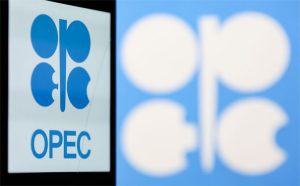
Mayra P. Saefong, William Watts, MarketWatch
SAN FRANCISCO/NEW YORK
EnergiesNet.com 07 29 2022
Oil futures settled on a mixed note Thursday, with global benchmark Brent crude prices notching a modest gain, but U.S. benchmark West Texas Intermediate crude giving up early gains to finish lower as economic data raised worries about a recession.
Price action
- West Texas Intermediate crude for September delivery CL00, 1.97% CL.1, 1.97% CLU22, 1.97% fell 84 cents, or 0.9%, to settle at $96.42 a barrel on the New York Mercantile Exchange.
- September Brent crude BRNU22, +1.92%, the global benchmark, rose 52 cents, or 0.5%, to close at $107.14 a barrel on ICE Futures Europe. October Brent BRN00, 1.95% BRNV22, 1.96%, the most actively traded contract, gained 16 cents, or 0.2%, to settle at $101.83 a barrel.
- Back on Nymex, August gasoline RBQ22, +2.43% added 1% at $3.4646 a gallon.
- August heating oil HOQ22, +0.91% fell 0.8% to $3.6863 a gallon.
- September natural gas NGU22, 0.23% settled at $8.134 per million British thermal units, down 4.9% for the session. Prices for the front month were trading about 50% higher month to date, which would be the second biggest monthly percentage rise on record, according to Dow Jones Market Data.
Market drivers
Prices for the global and U.S. crude benchmarks had both been trading higher early Thursday, with WTI touching its highest intraday level in a week, a day after data revealed declines in U.S. oil and product inventories and an uptick in implied demand for gasoline.
Economic data released Thursday were downbeat, raising the prospect of a recession that could lead to a slowdown in energy demand.
The U.S. economy shrank at an annual 0.9% pace in the second quarter. Gross domestic product had shrunk at a 1.6% pace in the first three months of the year.
“Crude prices remained a volatile trade as energy traders digested a surprising second consecutive contraction for the U.S. economy” said Edward Moya, senior market analyst at OANDA, in a note.
Also contributing to oil-price volatility, Moya said there were reports that the Organization of the Petroleum Exporting Countries and their allies, together known as OPEC+, “will likely keep production steady or consider a small increase in output.” The next OPEC+ meeting is scheduled for Aug. 3.
Traders also assessed the outlook for crude after the Federal Reserve on Wednesday delivered a 75 basis point benchmark interest rate increase.
“It looks like the Fed is locked into delivering more rate hikes and that will continue to weigh on economic activity and lead to softer crude demand going forward,” Moya said in an early Thursday market update.
Other analysts were more upbeat, arguing that the Fed had signaled that it may soon be slowing the pace of rate increases.
Read: Was Fed’s Powell dovish or not? 4 key takeaways from today’s press conference
Supply numbers
A report from the Energy Information Administration Wednesday, meanwhile, said crude inventories fell by 4.5 million barrels for the week ended July 22. On average, analysts expected a decline of 800,000 barrels, according to a poll conducted by S&P Global Commodity Insights.
The EIA report also showed bigger-than-expected weekly supply declines of 3.3 million barrels for gasoline and 800,000 barrels for distillates.
The amount of finished motor gasoline supplied last week, a proxy for demand, edged up by 724,000 barrels per day to about 9.2 million barrels per day.
Separately, the EIA on Thursday that domestic natural-gas supplies rose by 15 billion cubic feet for the week ended July 22. That compared with an average forecast for an increase of 25 billion cubic feet from analysts polled by S&P Global Commodity Insights.
marketwatch 07 28 2022











